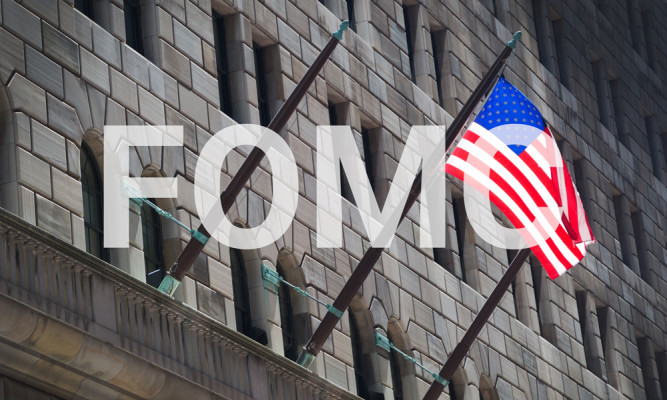Chưa phân loại
What is FOMC? How important is the FOMC announcement?
The Federal Open Market Committee (FOMC) is one of the four agencies in the structure of the Fed – the Federal Reserve or the Central Bank of the United States.
What is the Fed? Learn about the US Federal Reserve.
Among the Fed’s three tools to implement monetary policy, including: open market operations, reserve requirements, and interest rates, the FOMC’s role is responsible for open market operations, the remaining two tools are responsible for open market operations. will be handled by the Board of Governors. However, the members of the Board of Governors are also members of the FOMC, so it can be said that the FOMC is the direct agency that sets monetary policy in the US.
Every decision of the FOMC has a direct impact on the US economy. Therefore, the FOMC meetings are an economic event that all financial investors in the world are interested in.
Structural composition of FOMC
The US Congress enacted the Federal Reserve Acts in 1933 and 1935, creating the Federal Open Market Committee (FOMC) as part of the US Federal Reserve System. The FOMC has the role of setting the country’s monetary policy. The FOMC makes all decisions regarding the conduct of open market operations, decisions regarding the size and composition of the Fed’s asset holdings, and communicating with the public about future monetary policy.
The FOMC has a total of 12 members, of which 7 are members of the Board of Governors, the president of the Federal Reserve Bank of New York and 4 of the 11 presidents of the remaining 11 Federal Reserve Banks rotate. one year term.
All 12 Federal Reserve Bank presidents are present and discussed at FOMC meetings. However, only chairmen who were members of the Committee at that time were entitled to vote on policy decisions.
Under US law, the FOMC has the right to determine its own organizational structure. Traditionally, the FOMC elects the chairman of the Board of Governors as the chairman of the FOMC and the president of the Federal Reserve Bank of New York as vice president. The reason why the Federal Reserve Bank of New York is so important is because New York is not only the largest financial center in the United States, but all of the Fed’s bond trading activities are done at New York’s counters.
FOMC Duties and Functions
As mentioned, the FOMC is responsible for monitoring activities on the open market, is the main tool for the Fed to implement the monetary policy of the United States, in order to achieve the economic goals set forth by Congress, including These include maximizing employment, stabilizing prices, and maintaining moderate long-term interest rates. All three of these goals are geared towards the same grand goal, which is to propel the United States into a productive and stable economy.
Activities related to open market operations will directly drive the federal funds rate (FFR) to the target interest rate, thereby affecting overall monetary and credit conditions, aggregate demand and the entire economy.
The FOMC is also the body that directly directs the Fed’s activities in the region Forex market, is authorized to carry out programs related to currency exchange with foreign central banks.
How the FOMC uses open market operations to enforce monetary policy.
Open market operations are simply understood as activities of buying and selling valuable papers in the money market. This is the most frequently used tool and one of the most traded documents by the FOMC isgovernment bonds.
The economic factor that is directly affected by open market operations is the interest rate, in other words, the FOMC uses this tool to adjust interest rates in the market.
When the FOMC buys government bonds, it increases the amount of money in circulation. An increase in money supply will cause interest rates to decrease, thereby, increasing spending and borrowing from banks, expanding investment and production activities, promoting economic development.
In contrast, the FOMC issue of bonds to the public will reduce the amount of money in circulation, the money supply will decrease, leading to an increase in interest rates.
So, what is the reason for the FOMC to adjust interest rates in the market?
To answer this question, let’s go back to the three goals that Congress requires monetary policy to achieve: maximum employment, stable prices, and moderate long-term interest rates. On the other hand, inflation represents commodity prices, unemployment rate reflects employment status, therefore, once inflation and unemployment rate are at negative levels, the FOMC will be forced to adjust interest rates. .
Low and stable inflation: The United States has always directed its economy to a low and stable inflation rate. 2% is the country’s target inflation rate. Low and stable inflation helps operate the economy more efficiently, people can keep money without having to worry about inflation eating away its purchasing power. Moreover, businesses can make the most accurate long-term financial decisions, including borrowing or lending, saving or investing because the currency will not depreciate too much in the long term. In addition, a low and stable inflation rate will help keep long-term interest rates at a moderate level.
The goal of policymakers is the maximum number of jobs that can be maintained without causing inflation to rise. So when the economy grows too fast, commodity prices jump, leading to rising inflation. In response to inflation, the FOMC will increase interest rates by reducing the amount of money circulating in the market through the issuance of bonds to the public. When interest rates increase, investment activities and production expansion are tightened, the economy will begin to cool down and inflation will be reduced.
Conversely, when inflation decreases and unemployment rate rises, the FOMC will lower interest rates, stimulating investment demand and expanding production. As a result, the number of jobs increases, the economy improves.
Mechanism of interest rate adjustment
The FOMC adjusts interest rates in the market by announcing the target interest rate, and FFR is the type of interest rate that the FOMC announces in its meetings.
FFR – Fed Funds Rate (Federal Funds Rate) is the interest rate that commercial banks apply to lend to each other, also known as the interbank rate.
The FFR interest rate announced by the FOMC is a standard interest rate, which commercial banks will base on to set up different interest rates in the market. Of course, the FOMC does not directly force commercial banks to apply this interest rate, but with its operations in the open market, the FOMC will affect the supply and demand for capital of banks, thereby helping to The market automatically adjusts the value of the interest rate according to the interest rate announced by the FOMC.
When does the FOMC meeting take place and where do investors follow the FOMC announcements?
The FOMC holds eight meetings a year, and all are scheduled in advance. In addition, depending on the economic situation, there will be unexpected meetings. Normally, these meetings will take place in Washington within 2 days, with the exception of ad hoc meetings, which only last 1 day.
At the meeting, the FOMC will review the current economic and financial conditions, thereby determining the stance for monetary policy in the near future. At the same time, assess risks for long-term goals, which are price stability and sustainable economic growth.
Attending the meeting, all members of the FOMC were given their opinions on the policy that they consider appropriate to the current economic situation. Although not everyone can vote, all of these opinions are considered and play an important role in determining the final policy of the FOMC.
All words, opinions, predictions as well as suggestions of the members are recorded in a minutes. This minutes will be published 2 weeks after the meeting takes place. Although, after the meeting ends, the chairman of the FOMC, who is also the chairman of the Fed, will speak about the results of the meeting, but it is certain that the content will not be as clear and specific as this minute. Therefore, what investors in the financial markets, especially the foreign exchange market, are most interested in is the minutes of this meeting.
Investors can follow the announcements and meeting minutes of FOMC at sites such as investing.com, forexfactory.com or at forex broker provides Economic Calendar.
How important are FOMC (or Fed) announcements?
It is possible that the FOMC meetings will involve many different economic issues, but they all come down to a single goal of sustainable growth of the economy, and interest rate adjustment is the final policy. to achieve this goal.
Decide to increase or decrease interest rate of the FOMC will have a direct impact on the value of the US dollar. If interest rates are adjusted, the USD will appreciate and vice versa, a policy of reducing interest rates will make the USD depreciate.
An undeniable fact, USD is the most powerful currency in the world. Any fluctuations in its value will affect the global economy, especially the foreign exchange market. Gold, and EUR/USD, GBP/USD, USD/JPY… are the currency pairs most affected by the volatility of USD.
Is one traderIn the forex market, you must not ignore the announcements of the FOMC because it will help you grasp the general situation of the US economy, identify the changing direction of the USD. From there, predict the movement of currency pairs in this market to find potential profit opportunities.


